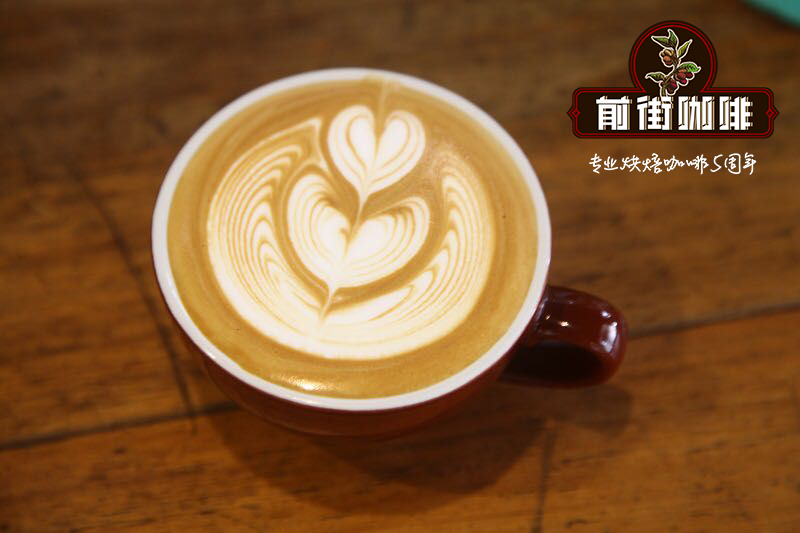The origin story of cappuccino coffee-Cappuccino is Austrian coffee?

Professional coffee knowledge exchange more coffee bean information please follow the coffee workshop (Wechat official account cafe_style)
In 1683, the army of the Ottoman Turkish Empire besieged Zweite Wiener T for two months, known as the "second siege of Vienna" (Vienna ü rkenbelagerung). Finally, with the help of Polish coalition forces, the Habsburg dynasty repelled the invading enemy and put an end to the Ottoman empire's fantasy of European expansion. Legend has it that on the day of the rescue, people found a lot of bags full of coffee beans. As a result, the drink of coffee took root in Vienna, and the first cafe in Vienna was born. Of course, this is a historical legend. The fact is that in the second half of the 17th century, an industrious Greek businessman opened the first coffee shop in Vienna.
German coffee shop culture should come from France, because the word Caf é used in German comes from French. But in Austria, people use the pure German word Kaffeehaus, because Austria, especially Vienna, has a coffee culture not inferior to that of France, and there is no need to use loanwords at all. The cafe culture of Vienna and the cafe culture of the Latin district of Paris are called the two major cafe cultures in Europe. Some people say that half of Vienna's brilliant cultural achievements are due to its coffee aroma. Although there is an element of exaggeration in this phrase, countless singers, composers, painters, actors, dramatists and writers are inspired by the "bitter and sweet" melody of coffee and cake.
For Viennese, cafes are an integral part of their lives. If you want to hear a beautiful waltz, you have to go to a cafe! If you need a home atmosphere, but don't want to stay at home, you should go to a cafe! If 12:00 midnight, you are alone, but you still want to go for a walk, see the people of Vienna, then you want to go to the cafe! If you want to try the ice cream that once made Princess Cissy so happy, you should go to the cafe! If you want to feel how Viennese literature came into being, you have to go to a cafe! If you like reading newspapers and don't want to pay for it, you must go to a cafe!
In every Viennese cafe, you will come across a kind of coffee called Kapuziner. This is a special kind of coffee in Vienna. it needs a small black mocha and then paired with whipped whipped cream (Schlagobers) so that the coffee can turn dark brown. On individual occasions, you can add a cream hat or sprinkle some cocoa powder. The color of the coffee reminds the owners of the Viennese cafe who made it of the Franciscan friars. The friar usually wears a dark brown hood. At the same time, the white cream also reminds people of the white belt worn around the waist of the Gabrian monks. So people call it Kapuziner, which means the friar of the Franciscan order.
During the reign of Princess Sisi's husband, Franz Joseph I, Venice and Lombardy in northern Italy were dependent on the Austro-Hungarian Empire. There are many Austrian soldiers stationed there, and legend has it that they brought the cappuccino to the area. But others say it was brought back to Italy by Italian travelers from Vienna. In any case, people in Italy immediately fell in love with this coffee, because the Italian word for "Franciscan Friar" is "cappuccini", so this coffee is called "Cappuccino", which is today's famous cappuccino.
According to experts in the cultural history of coffee, in hot Italy, thin whipped cream is not easy to preserve, so locals directly use milk to mix the color of coffee, while abandoning heavy cream hats and adding foamy milk. In addition, the coffee itself has abandoned the traditional mocha and used espresso, which is more Italian. With the passage of time, the difference between the two is getting bigger and bigger. The latter has become a popular native coffee among Italians and is popular all over the world. Italians like to start the day with a cappuccino in the morning, using cups with thick walls to keep the coffee as hot as possible. It is said that when drinking cappuccino, the hotter the better.
On the other hand, the cappuccino in Vienna has been preserved as a local feature of Vienna, but it has been fully squeezed by its successor cappuccino, and the living space is getting smaller and smaller, so that many young Austrians only know cappuccino. It is a pity that they do not know cappuccino.
Important Notice :
前街咖啡 FrontStreet Coffee has moved to new addredd:
FrontStreet Coffee Address: 315,Donghua East Road,GuangZhou
Tel:020 38364473
- Prev

What are the differences in the taste and practice of Espresso,Latte,Cappuccino,Mocha coffee?
Professional coffee knowledge exchange more coffee bean information please follow the coffee workshop (Wechat official account cafe_style) Cappuccino, Espresso, Mocha, Latte there are many different kinds of coffee on the market, does it make you silly and confused? As a matter of fact, this problem is buried in the hearts of many people. Let's take a look at the differences between these four kinds of coffee. Es
- Next

Ice Coffee five recipes Ice American Coffee Ice drop Cold extraction Ice hand Coffee course Coffee Taste
Professional coffee knowledge exchange more coffee bean information Please follow the coffee workshop (Wechat official account cafe_style) it's time to talk about coffee, now in this weather, put eggs on the sidewalk, eggs can be fried, and drinking hot coffee is simply adding fuel to the fire! You can take a bus to the nearest Starbucks, but think about Starbucks' hot leather seats against your legs.
Related
- Beginners will see the "Coffee pull flower" guide!
- What is the difference between ice blog purified milk and ordinary milk coffee?
- Why is the Philippines the largest producer of crops in Liberia?
- For coffee extraction, should the fine powder be retained?
- How does extracted espresso fill pressed powder? How much strength does it take to press the powder?
- How to make jasmine cold extract coffee? Is the jasmine + latte good?
- Will this little toy really make the coffee taste better? How does Lily Drip affect coffee extraction?
- Will the action of slapping the filter cup also affect coffee extraction?
- What's the difference between powder-to-water ratio and powder-to-liquid ratio?
- What is the Ethiopian local species? What does it have to do with Heirloom native species?

